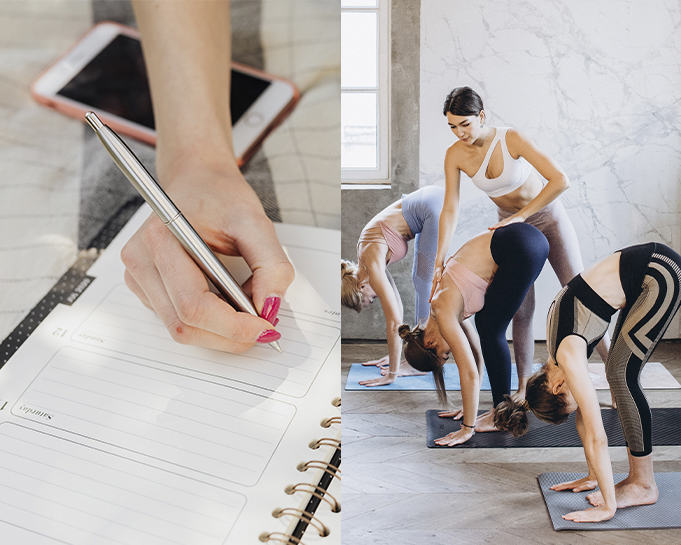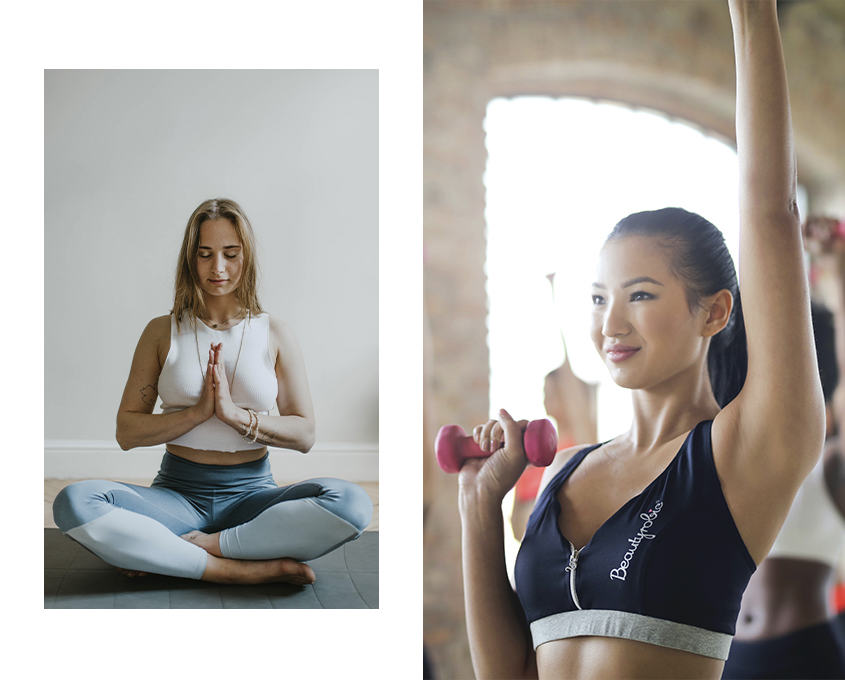
1.Find something you like
Our first tip sounds simple but it is crucial to success. It seems obvious enough that if you don’t enjoy something you will avoid doing it, but studies actually prove this to be true. Enjoying your workout really is the best way to be more effective when you workout - and increase motivation!
Oriflame Global Wellness Marketing Director and fitness coach Elisabeth Ringmar agrees. “I believe the best is to find a sport, exercise or fitness routine that you really like, and that fits into your life,” says Ringmar.” Then the hurdle is lower to get it done.”
We can all endure things we don't enjoy for a short period, but we will not do so forever, so finding our fitness anchor is vital.
2. Plan, plan plan
No game plan, no win. ”I also strongly believe in scheduling your exercise,” Ringmar suggests. ”It should have a given place and time in your life and calendar just like working, eating, sleeping and seeing friends and family. Make time for it!”
Instead of wandering aimlessly from one piece of equipment to the next, map out your workouts for each week so you know what you’ll be doing before you start!
3. Ask for help
It’s easy to want to maximise your weights or physical efforts from the get-go, but don’t get caught up in comparing yourself to the biggest or fittest person next to you. Instead, get a proper fitness assessment, ask a trainer for advice or even invest in a few training sessions to learn the ropes. Coaches have shown to boost your performance and training effectiveness, since you’ll be aware of the do’s and don’ts right from the start.

4. Multitask your movements
Double up the effect of your exercises with compound movements! Instead of isolating your muscles with exercises such as the bicep curl, maximise your time and effort by picking a movement that work out multiple muscle groups at once. Benefits? You get easier get a full body workout and your muscles are working together as they do in your every day life, rather than alone. In the video below, Ringmar shows some common compound movements that can stand in for an effective full-body workout.
“With compound exercises, where you use your whole body, you activate also your smaller assisting muscles. You will strengthen your core muscles and improve your balance. Also, by involving and building all big muscles in your body, like your legs and back, you burn more calories both while exercising and in between exercise. The plank position is a good example of a compound exercise, especially if you also move your legs and arms while standing in plank,” says Ringmar.
5. Mix it up
It’s a great feeling when you finally get the hang of how to use a dumbbell or nail a dance choreography, but the more you challenge yourself to switch up routines the better. Your body will eventually adjust to the stress level and you won’t be getting an effective workout. For cardio, try to cross train rather than running every time and change your strength training every few weeks. Also, try to squeeze in one or two HIIT sessions; these are great to amp up your metabolism a little extra!
6. Rest
We are all for regular exercises and healthy habits. But too much of a good thing can actually be more harmful than beneficial. Overtraining can lead to your body and immune system breaking down, and this will only delay results. Focus on moderation and remember that the greatest results come from work AND recovery. Stretching, swimming or yoga are great recovery exercises and never underestimate the power of sleep!

7. Stick to it
Commitment and a proper routine are fundamentals to building a solid and consistent fitness plan. Keep it real and be honest with yourself; what is your main goal? What will make you stick to your workout plan? Having goals doesn’t have to mean aiming to run a marathon – it can be to simply do some physical activity every day.
“I think it is very individual how much you are triggered by goals,” says Ringmar. “I exercise because I enjoy it, I know it’s good for me and it helps me stay fit and strong, but I don’t have a specific goal or target like a race. Others may want a goal to strive towards, to create motivation to exercise and to feel the pride when the goal has been accomplished (and then set new goals).”
8. Do you
Last but not least; don’t be too hard on yourself. We all have bad, stressful or de-motivating days and pursuing perfection can easily become a slippery slope. Remember to take your time, sweat, breathe loudly and skip your workout if you feel you need to.
“Any small step you take is better than not taking any step,” says Ringmar. ”Go for a walk, lift things, move around, use your body. Then if you want to add more targeted training to get stronger, improve your pulse, lower your weight etc. then do so. As with many things, getting started is the big step, then things follow more easily.”



